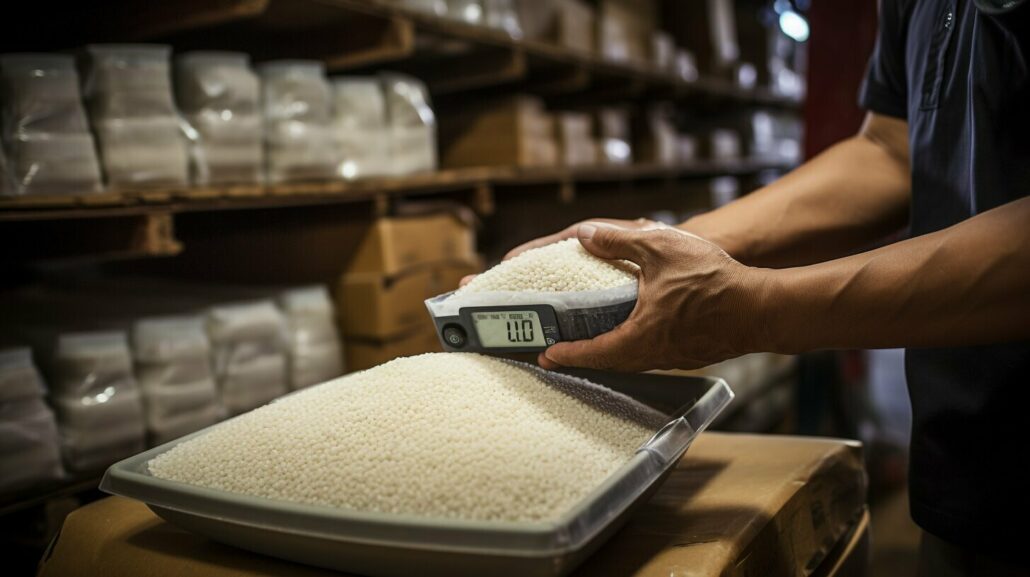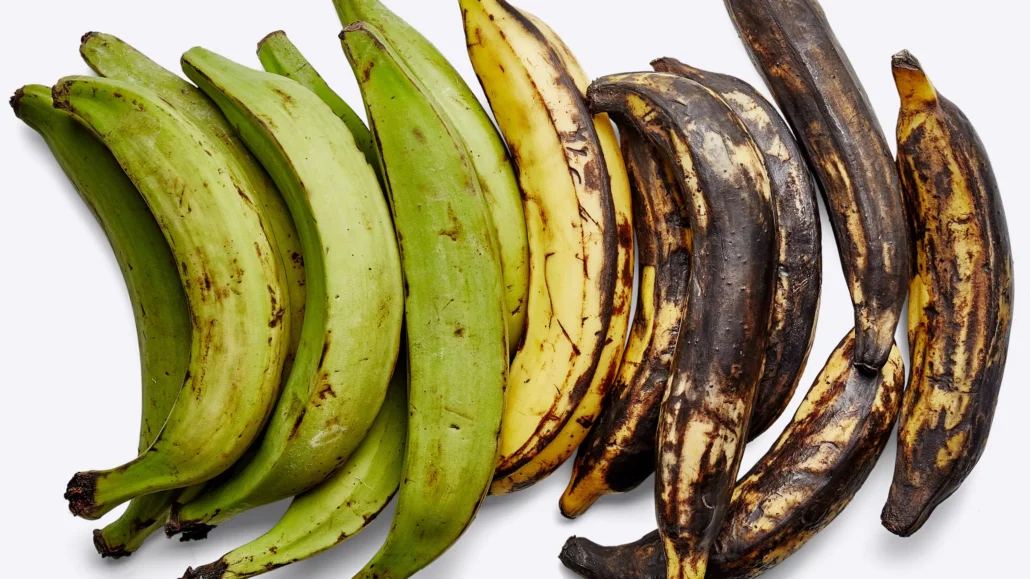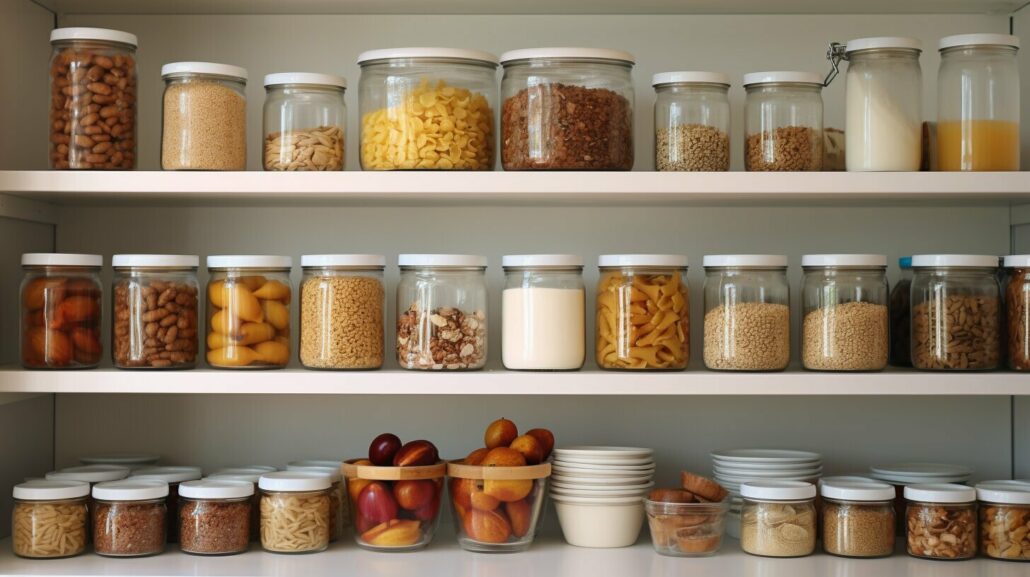When it comes to prepping rice, it’s important to know how much to cook per person to ensure everyone is adequately nourished during emergencies. Whether it’s for a side dish or the main course, determining the right amount of rice is crucial. Here are some key guidelines to help you in prepping rice quantities:
Key Takeaways:
- For side dishes, it’s recommended to use ¼ cup of uncooked rice per person.
- If rice is the main course, ½ cup of uncooked rice per person is suggested.
- Cooked rice amounts may vary based on the type of rice and cooking method.
- Consider factors such as hungry eaters and low carb diets when determining the amount of rice to cook.
- Leftover rice can be stored in the refrigerator for 2-3 days or in the freezer for up to a month.
- If using cauliflower rice, 1 to 1 ½ cups of cooked cauliflower rice per person is generally recommended.
- Brown rice is considered a healthier option due to its higher fiber content.
- The table provides serving sizes and cooking times for different types of rice.
- Leftover rice can be repurposed into various delicious dishes like casseroles, stuffed vegetables, frittatas, and rice pudding.
Recommended Rice Serving Sizes for Side Dishes and Main Courses
To ensure everyone is adequately served, it’s recommended to allocate specific amounts of uncooked rice per person based on whether it is being served as a side dish or the main course. For side dishes, the general guideline is to use ¼ cup of uncooked rice per person. This amount allows for a reasonable serving size while still considering other components of the meal.
If rice is the main course, a slightly larger portion of ½ cup of uncooked rice per person is suggested. This ensures that individuals feel satisfied and have enough rice to make it a substantial meal. It’s important to remember that these serving sizes are based on uncooked amounts, as the cooked rice can vary depending on the type of rice and cooking method used.
Factors such as hungry eaters, low carb diets, and the potential for leftovers should also be taken into consideration when determining the amount of rice to cook. Some individuals may require larger portions due to their appetite, while others may be following low carb diets that limit their rice intake. Additionally, if there are leftovers, they can be stored in the refrigerator for 2-3 days or in the freezer for up to a month, providing an extra meal option for later.
| Type of Rice | Serving Size (Uncooked) | Cooking Time |
|---|---|---|
| White Rice | ¼ cup per person | 15-20 minutes |
| Brown Rice | ¼ cup per person | 40-45 minutes |
| Basmati Rice | ¼ cup per person | 15-20 minutes |
| Jasmine Rice | ¼ cup per person | 15-20 minutes |
When using cauliflower rice as a substitute, it’s generally recommended to allocate 1 to 1 ½ cups of cooked cauliflower rice per person. This ensures that individuals have an adequate vegetable portion while still enjoying a satisfying meal.
Remember, it’s crucial to consider these guidelines for allocating rice portions during emergency preparedness. By doing so, you can ensure that everyone has enough food to sustain themselves, while also minimizing waste and making the most of your available resources.
Factors to Consider When Determining Rice Amounts for Each Person
When calculating rice portions for each person, it’s essential to consider various factors such as the appetites of hungry eaters, dietary restrictions like low carb diets, and the need for rationing rice during emergency situations. By taking these factors into account, we can ensure that everyone’s needs are met and that rice is allocated appropriately.
Firstly, it’s important to consider hungry eaters who may require larger portions to satisfy their appetites. During emergency situations, when access to food may be limited, it’s crucial to factor in the possibility of increased hunger. Providing slightly larger servings of rice can help ensure that everyone has enough to eat and that their nutritional needs are met.
Secondly, it’s necessary to consider individuals who follow low carb diets. For those on restricted carbohydrate diets, rice may need to be limited or substituted with alternative options. In such cases, allocating smaller portions of rice and supplementing meals with other low-carb ingredients can cater to their dietary requirements.
Lastly, rice rationing is essential during emergency preparedness. By rationing rice, we can ensure that everyone has access to an adequate amount without wastage. It’s crucial to determine the appropriate portion sizes per person and stick to those allocations to make the available rice last as long as possible.
| Factor | Considerations |
|---|---|
| Hungry Eaters | Larger portions may be needed |
| Low Carb Diets | Consider alternatives and limit rice portions |
| Rice Rationing | Allocate appropriate portions per person |
In summary, when determining rice amounts for each person, it’s crucial to consider factors such as the appetites of hungry eaters, dietary restrictions like low carb diets, and the need for rationing during emergencies. By taking these factors into account and following the recommended serving sizes, we can ensure that everyone’s needs are met and that rice is allocated appropriately, promoting effective emergency preparedness.
Storing and Utilizing Leftover Rice
Leftover rice can be stored and repurposed to minimize food waste during emergency preparedness, providing additional meals and versatility in your menu. Whether you have excess cooked rice from a previous meal or intentionally cook extra rice for future use, proper storage is essential to maintain its freshness and quality.
When storing leftover rice, it is recommended to refrigerate it promptly after it has cooled down. Place the rice in an airtight container to prevent moisture and odors from affecting its taste. Rice can be safely stored in the refrigerator for 2-3 days, ensuring it remains safe for consumption. If you require a longer storage time, consider freezing the rice. Transfer the rice into a sealed freezer-safe bag or container, removing as much air as possible to prevent freezer burn. Frozen rice can be stored for up to a month, allowing you to have a convenient supply of precooked rice when needed.
Utilizing leftover rice can add variety and flavor to your emergency preparedness meals. Here are some creative ideas to repurpose your excess rice:
- Casseroles: Combine leftover rice with vegetables, protein, and sauce to create a delicious one-dish meal. Bake it in the oven until hot and bubbly for a satisfying and hearty option.
- Stuffed Vegetables: Hollow out vegetables such as bell peppers or zucchini and fill them with a mixture of seasoned rice and other fillings like cheese, meat, or beans. Roast or grill the stuffed vegetables for a flavorful and nutritious meal.
- Frittatas: Incorporate leftover rice into a frittata by combining it with beaten eggs, vegetables, and cheese. Cook it on the stovetop or in the oven for a quick and protein-packed dish.
- Rice Pudding: Sweeten up your leftovers by making a creamy rice pudding. Combine cooked rice with milk, sugar, and warm spices like cinnamon and nutmeg. Simmer the mixture until it thickens, and serve it warm or chilled for a comforting dessert.
By storing and utilizing leftover rice effectively, you can stretch your food supplies, reduce waste, and incorporate variety into your emergency meals. Get creative and experiment with different flavors and ingredients to make the most out of your prepped rice!
| Rice Type | Serving Size (Uncooked) | Cooking Time |
|---|---|---|
| Long Grain White Rice | ¼ cup | 15-20 minutes |
| Basmati Rice | ¼ cup | 15-20 minutes |
| Jasmine Rice | ¼ cup | 15-20 minutes |
| Short Grain White Rice | ¼ cup | 15-20 minutes |
| Medium Grain White Rice | ¼ cup | 15-20 minutes |
Nutritional Differences Between White Rice and Brown Rice
Understanding the nutritional disparities between white rice and brown rice is crucial when making choices for rice allocation during emergency preparedness. Brown rice is considered a healthier option due to its higher fiber content, which helps promote digestion and keeps you feeling fuller for longer. It also contains more vitamins and minerals compared to white rice, such as magnesium, phosphorus, and B vitamins.
On the other hand, white rice has undergone a refining process that strips away the bran and germ, resulting in a loss of nutrients. While it still provides a good source of energy through carbohydrates, it lacks the fiber and nutrient density of brown rice. This is why nutritionists often recommend incorporating more brown rice into one’s diet for its added health benefits.
To give you a better idea of how rice allocation can differ between white and brown rice, consider this example:
| Rice Type | Serving Size |
|---|---|
| White Rice | 1/4 cup (uncooked) per person |
| Brown Rice | 1/3 cup (uncooked) per person |
These recommended serving sizes account for both uncooked rice and cooking variations. Remember, it’s important to adjust portion sizes based on the specific needs of your intended audience and their dietary preferences.
Serving Sizes and Cooking Times for Different Types of Rice
To ensure accurate portioning of rice, it’s necessary to consider the serving sizes and cooking times for different types of rice. Here is a table that provides a quick reference guide:
| Rice Type | Serving Size (uncooked) | Cooking Time (minutes) |
|---|---|---|
| White Rice (long grain) | 1/4 cup | 15-20 |
| White Rice (medium grain) | 1/4 cup | 10-15 |
| White Rice (short grain) | 1/4 cup | 15-20 |
| Basmati Rice | 1/4 cup | 15-20 |
| Jasmine Rice | 1/4 cup | 10-15 |
| Wild Rice | 1/4 cup | 45-55 |
Keep in mind that these serving sizes are based on uncooked amounts, and the cooked rice amount may vary depending on your cooking method and the type of rice you use. Adjustments may be needed to accommodate dietary preferences, such as hungry eaters or low carb diets. And don’t forget to consider leftovers. They can be stored in the refrigerator for 2-3 days or in the freezer for up to a month.
If you’re looking for a healthier option, consider using brown rice. It has a higher fiber content compared to white rice, making it a more nutritious choice. When using brown rice, the general serving size remains the same, but the cooking time may need to be extended to about 40-50 minutes.
When it comes to repurposing leftover rice, the possibilities are endless. You can turn it into delicious dishes like casseroles, stuffed vegetables, frittatas, or rice pudding. Get creative and make the most out of your leftover rice!
Repurposing Leftover Rice into Delicious Dishes
Instead of letting leftover rice go to waste, consider repurposing it into delicious dishes that can bring variety and flavor to your emergency meals. With a bit of creativity, you can transform that extra rice into mouth-watering casseroles, stuffed vegetables, frittatas, and rice pudding. These recipes are easy to make and will help you make the most out of your available ingredients.
One great option is to make a rice casserole. Simply mix the leftover rice with your favorite vegetables, such as peas, carrots, and corn, and add some protein like cooked chicken or sausage. Top it off with shredded cheese and bake until golden and bubbly. This hearty and comforting dish is sure to satisfy your hunger.
If you have leftover rice and some fresh vegetables on hand, consider stuffing them. Hollow out bell peppers, zucchinis, or tomatoes, and fill them with a mixture of rice, sautéed onions, garlic, and herbs. Top with cheese and bake until the vegetables are tender and the cheese is melted. These stuffed vegetables make for an impressive and nutritious dinner option.
For a quick and easy meal, whip up a frittata using leftover rice. Beat some eggs, add the rice, and mix in your choice of vegetables, such as spinach, mushrooms, or bell peppers. Pour the mixture into a greased skillet and cook until the eggs are set. This versatile dish can be enjoyed for breakfast, lunch, or dinner.
Last but not least, don’t forget about the classic rice pudding. Simmer the leftover rice in milk with some sugar, vanilla, and a pinch of cinnamon until thick and creamy. You can customize your rice pudding by adding raisins, chopped nuts, or a drizzle of honey. This comforting dessert is a great way to end a meal on a sweet note.
So, the next time you find yourself with leftover rice, get creative in the kitchen and try one of these delicious ideas. Repurposing your rice not only reduces food waste but also adds variety and flavor to your emergency meals.
| Dish | Ingredients | Instructions |
|---|---|---|
| Rice Casserole | Leftover rice, vegetables, protein (optional), shredded cheese | 1. Preheat oven to 375°F (190°C). 2. Mix leftover rice with chopped vegetables and cooked protein. 3. Transfer mixture to a casserole dish and top with shredded cheese. 4. Bake for 20-25 minutes, or until cheese is melted and golden. |
| Stuffed Vegetables | Hollowed-out bell peppers, zucchinis, or tomatoes, leftover rice, sautéed onions, garlic, herbs, cheese | 1. Preheat oven to 400°F (200°C). 2. In a bowl, mix the leftover rice with sautéed onions, garlic, herbs, and cheese. 3. Stuff the hollowed-out vegetables with the rice mixture. 4. Place the stuffed vegetables in a baking dish and bake for 25-30 minutes, or until the vegetables are tender. |
| Rice Frittata | Leftover rice, eggs, vegetables (spinach, mushrooms, bell peppers), cheese | 1. In a bowl, beat the eggs and mix in the leftover rice and chopped vegetables. 2. Heat a greased skillet over medium heat and pour in the egg mixture. 3. Cook for 5-7 minutes, or until the eggs are set. 4. Flip the frittata and cook for an additional 2-3 minutes. 5. Serve hot or at room temperature. |
| Rice Pudding | Leftover rice, milk, sugar, vanilla extract, cinnamon | 1. In a saucepan, combine the leftover rice, milk, sugar, vanilla extract, and cinnamon. 2. Bring the mixture to a simmer over medium heat, stirring occasionally. 3. Cook for 15-20 minutes, or until the pudding thickens. 4. Remove from heat and let it cool for a few minutes. 5. Serve warm or chilled. |
Storing Rice: Refrigeration and Freezing Recommendations
Proper storage of leftover rice is essential to preserve its quality and extend its shelf life, allowing for safe consumption during emergencies. Here are some recommendations for refrigeration and freezing to ensure your rice stays fresh:
- Refrigeration: Leftover rice should be cooled quickly and stored in an airtight container in the refrigerator. It can be kept for 2-3 days, but it’s important to reheat it thoroughly before consuming. When reheating, make sure to heat the rice until it is piping hot to kill any bacteria that may have formed.
- Freezing: If you have more leftovers than you can consume within a few days, freezing is a great option. Portion the rice into individual freezer-safe containers or freezer bags. Label each portion with the date and freeze for up to a month. When ready to use, thaw the rice in the refrigerator overnight, then reheat it thoroughly before serving.
If you’re looking for a low-carb alternative to traditional rice, cauliflower rice is a great option. To prepare cauliflower rice, pulse raw cauliflower florets in a food processor until they resemble rice grains. Steam or sauté the cauliflower rice until tender. For prepping purposes, 1 to 1 ½ cups of cooked cauliflower rice per person is generally recommended.
Table: Serving Sizes and Cooking Times for Different Types of Rice
| Type of Rice | Serving Size (Uncooked) | Cooking Time |
|---|---|---|
| White Rice (Long Grain) | ½ cup per person | 15-20 minutes |
| Brown Rice (Long Grain) | ½ cup per person | 35-45 minutes |
| Basmati Rice | ½ cup per person | 15-20 minutes |
| Jasmine Rice | ½ cup per person | 12-15 minutes |
Leftover rice doesn’t have to go to waste. There are plenty of delicious dishes you can create with it. Consider making casseroles, stuffing vegetables, whipping up frittatas, or indulging in creamy rice pudding. Repurposing leftovers not only reduces food waste but also adds variety to your emergency meals.
Considering Special Dietary Needs and Preferences
It’s crucial to cater to special dietary needs and preferences by offering vegetarian and gluten-free rice options during emergency preparedness. We understand that individuals with special dietary requirements may have limited options during challenging times, and we want to ensure that everyone’s needs are met. By providing vegetarian and gluten-free rice options, we can accommodate a wider range of dietary restrictions and create meals that are both nutritious and suitable for all.
For individuals who follow a vegetarian diet, there are plenty of rice options available. Brown rice, wild rice, jasmine rice, and basmati rice are all vegetarian-friendly and can be cooked to perfection. These rice varieties offer a delicious and nutritious base for accompanying vegetables, sauces, and proteins. By incorporating vegetables, beans, or tofu, we can create satisfying vegetarian rice dishes that are packed with flavor and essential nutrients.
In addition to vegetarian options, it’s important to consider those who require gluten-free rice alternatives. Rice itself is naturally gluten-free, making it an excellent choice for individuals with gluten sensitivities or celiac disease. It’s essential to ensure that the rice used in emergency preparedness is uncontaminated and free from any cross-contamination with gluten-containing ingredients. By providing gluten-free rice options, we can guarantee safe and suitable meals for those with gluten restrictions.
During emergency situations, we prioritize the well-being and satisfaction of all individuals, and one way we can achieve this is through diverse rice offerings. By catering to special dietary needs and preferences, we can provide delicious, nutritious, and inclusive meals that ensure no one is left behind. Let’s come together and make sure that everyone has access to the rice options that suit their unique requirements during challenging times.
Recap: Key Points for Prepping Rice Portions
To ensure efficient emergency preparedness, remember to allocate specific amounts of rice per person based on serving sizes, consider individual needs, store and utilize leftover rice, and accommodate special dietary requirements.
When it comes to determining how much rice to cook per person, the recommended serving sizes are as follows: for side dishes, use ¼ cup of uncooked rice per person, and for main courses, ½ cup of uncooked rice per person. It’s important to note that these serving sizes are based on uncooked amounts, and the cooked rice can vary depending on the type of rice and cooking method.
Factors such as hungry eaters, low carb diets, and the presence of leftovers should be taken into account when deciding on the amount of rice to prepare. If there are leftovers, they can be stored in the refrigerator for 2-3 days or in the freezer for up to a month. For those opting for cauliflower rice, it is generally recommended to cook 1 to 1 ½ cups of cauliflower rice per person.
It’s also essential to consider the nutritional differences between white rice and brown rice. Brown rice, with its higher fiber content, is considered a healthier option. Therefore, it’s a good practice to allocate more brown rice for emergency preparedness. Additionally, the table provided in this article offers serving sizes and cooking times for different types of rice, which can further assist in portion control.
Lastly, in order to add variety to emergency meals and minimize food waste, don’t forget to repurpose leftover rice into delicious dishes. Casseroles, stuffed vegetables, frittatas, and rice pudding are just a few creative options worth exploring.
By following these guidelines and considering individual needs, you can ensure that your rice preparation is not only sufficient but also caters to everyone’s dietary requirements during challenging times.
FAQ
Q: How much rice should I cook per person for a side dish?
A: It is recommended to use ¼ cup of uncooked rice per person for a side dish.
Q: What is the suggested amount of rice per person for a main course?
A: For a main course, it is suggested to use ½ cup of uncooked rice per person.
Q: Can the cooked rice amount vary?
A: Yes, the cooked rice amount can vary depending on the type of rice and cooking method.
Q: What factors should I consider when determining the amount of rice to cook?
A: Factors such as hungry eaters, low carb diets, and leftovers should be considered when determining the amount of rice to cook.
Q: How long can leftover rice be stored?
A: Leftover rice can be stored in the refrigerator for 2-3 days or in the freezer for up to a month.
Q: How much cooked cauliflower rice should I serve per person?
A: Generally, 1 to 1 ½ cups of cooked cauliflower rice per person is recommended.
Q: What are the nutritional differences between white rice and brown rice?
A: Brown rice is considered a healthier option due to its higher fiber content compared to white rice.
Q: Do different types of rice have different serving sizes and cooking times?
A: Yes, different types of rice have different serving sizes and cooking times. Adjust portion sizes accordingly.
Q: How can I repurpose leftover rice?
A: Leftover rice can be repurposed into dishes like casseroles, stuffed vegetables, frittatas, and rice pudding.
Q: How should I store leftover rice?
A: Leftover rice can be stored in the refrigerator or freezer. Follow recommended storage times for each method.
Q: How should I consider special dietary needs and preferences?
A: Consider special dietary needs and preferences by offering vegetarian and gluten-free rice options.
Q: What are the key points for prepping rice portions?
A: Allocate specific amounts of rice per person based on the dish type, consider various factors, store and repurpose leftover rice, and cater to special dietary needs.










